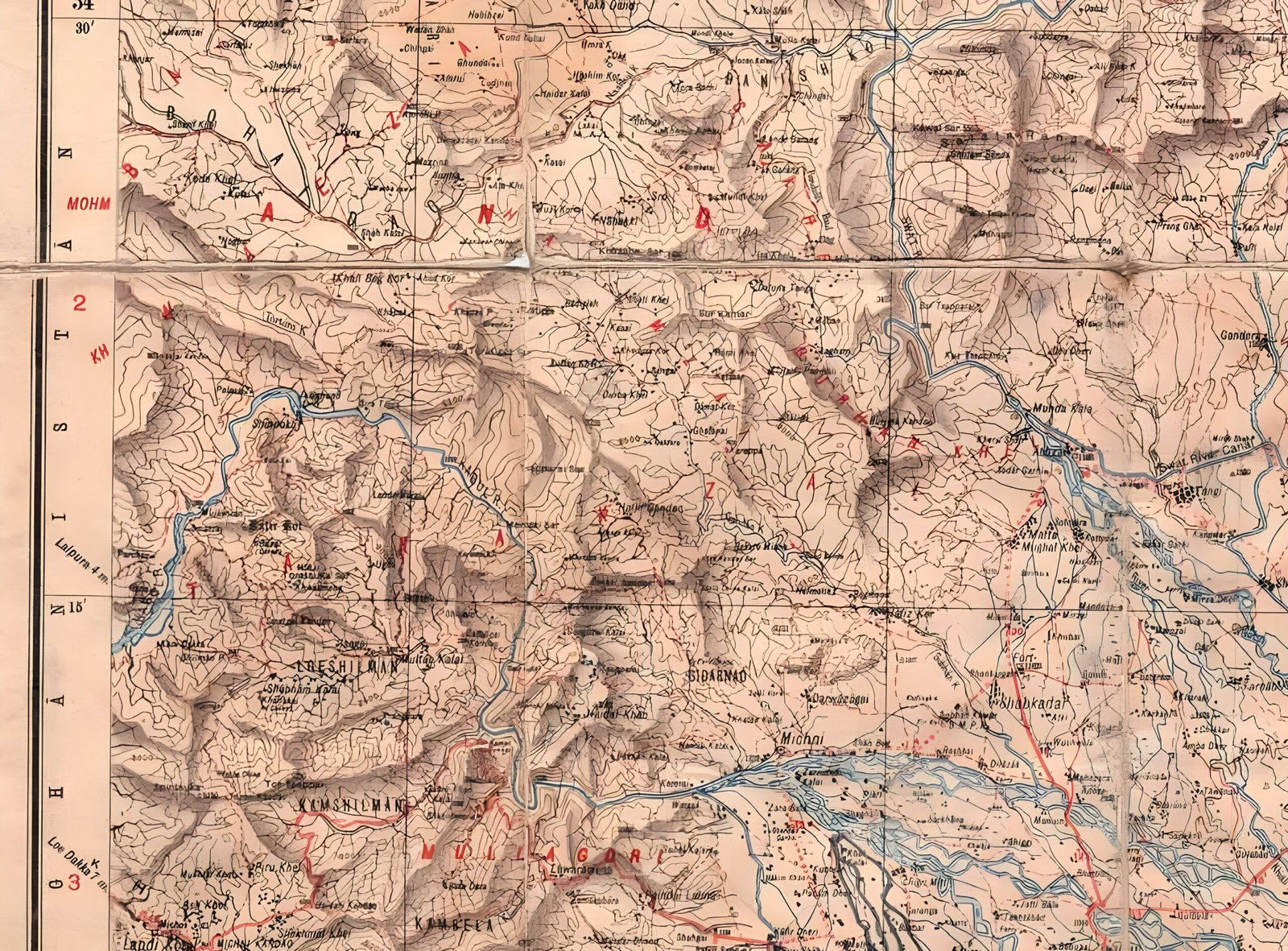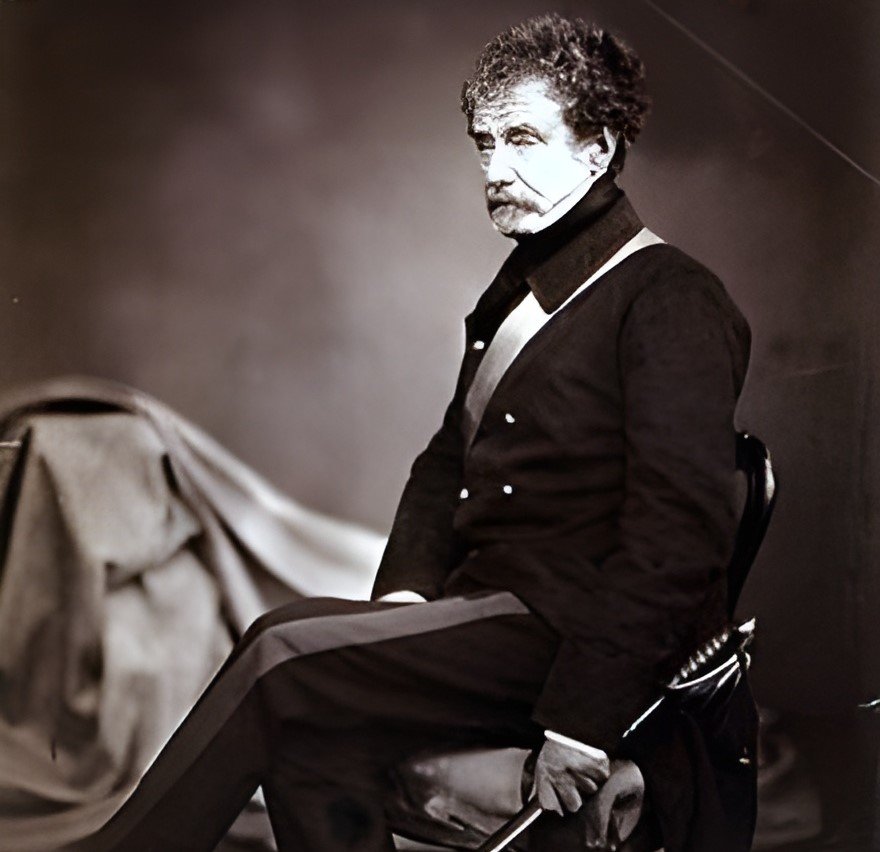
Objective
This article explores the history and legacy of the 66th Gurkhas and their participation in British frontier expeditions, highlighting the cultural and practical significance of the Khukuri knife in their military achievements.
Introduction
In the mid-19th century, a new chapter unfolded on the rugged frontier territories of British India. Here, the 66th Gurkhas, an elite regiment renowned for their unwavering courage and distinctive Khukuri knives, made their mark. From the Mohmand expedition to campaigns in the Ranizai and Miranzai Valleys, the 66th Gurkhas’ role was pivotal in solidifying British control over these difficult-to-manage regions.
Known for their short stature, immense strength, and loyalty, the Gurkhas wielded the Khukuri, a weapon that was both a badge of honor and a formidable tool in combat. This article delves into the 66th Gurkhas’ history, the iconic Khukuri’s place in their culture, and the regiment’s contributions to British colonial campaigns on the Indian frontier.
The Formation of the 66th Gurkhas
Origins and Background

Early Map Of Afghanistan
Early Map Of Afghanistan
The story of the 66th Gurkhas began in 1850, following significant unrest in British-controlled Punjab. Originally designated as the Nasiri Battalion, this unit of Nepali soldiers underwent a transformative reorganization under British authority.
Following mutinous actions by the 66th Native Infantry, Sir Charles Napier, then Commander-in-Chief of the British Army in India, saw an opportunity to rebuild the regiment. He aimed to strengthen loyalty and bring a new level of discipline to the regiment by replacing the Hindustani soldiers with Gurkhas. This led to the official establishment of the 66th Gurkhas in 1850, marking the beginning of their notable legacy on the British frontier.
The Khukuri: Symbol and Weapon of the Gurkhas

Description and Cultural Importance
The Khukuri, often recognized by its distinctive inward curve, is a versatile tool used by the Gurkhas both in battle and daily life. Beyond its utility, the Khukuri holds deep cultural significance, symbolizing courage, honor, and the warrior spirit of the Gurkhas. For these soldiers, the Khukuri was more than a weapon; it was an emblem of their loyalty and resilience.
In combat, the Khukuri was not only a practical tool for close-quarter engagements but also served to inspire confidence and a psychological edge over opponents.
Kukri Uses and Tactical Importance
In frontier skirmishes, the Gurkhas’ use of the Khukuri made a significant impact. Its size and design allowed for swift, powerful movements in hand-to-hand combat, often catching opponents off guard. The Khukuri’s intimidating reputation among adversaries further enhanced the Gurkhas’ fearsome status. During the British frontier campaigns, Gurkhas used their Khukuris to navigate and survive the challenging terrain, adding to the regiment’s reputation for tenacity and versatility.
Major Frontier Expeditions Involving the 66th Gurkhas
The 66th Gurkhas were central to various British expeditions aimed at stabilizing volatile frontier regions. Their strategic deployment and unique combat skills, including their use of the Khukuri knife, earned them a lasting reputation in British military history.
1. The Mohmand Expedition (1851-1852)

In October 1851, the Mohmand tribe launched a series of attacks on British-held villages, causing widespread destruction. In response, Brigadier-General Sir Colin Campbell led a punitive expedition on October 25, 1851, which included the 66th Gurkhas.
Their mission was to push back against the Mohmands, dismantling their villages to assert British dominance in the region. Moving strategically through the rugged frontier, the Gurkhas engaged in the systematic destruction of enemy settlements, employing their Khukuris in skirmishes along the way.
The campaign demonstrated the effectiveness of the Gurkhas’ close-combat tactics, honed by years of training with the Khukuri. The expedition was successful in discouraging further attacks, securing British interests in Peshawar, and reinforcing the reputation of the 66th Gurkhas as fierce and dependable soldiers.
2. The Ranizai Campaign (1852)

In early 1852, the 66th Gurkhas embarked on another critical mission to address conflicts with the Ranizai tribe, who had resisted British incursions into their territory. Led again by Sir Colin Campbell, the 66th Gurkhas and other British forces advanced to the Malakand Pass. As they moved through the Ranizai strongholds, the Gurkhas were instrumental in managing frontier skirmishes.
The Ranizai campaign is notable for highlighting the Gurkhas’ versatility. With the Khukuri as their primary weapon, they excelled in hand-to-hand combat, utilizing the knife’s unique design to navigate the challenging terrain of the Malakand Pass. By the campaign’s end, British forces had subdued Ranizai’s resistance, solidifying the strategic importance of the region for the British Empire.
3. The Utman Khel Expedition (1853)

A formidable tribal group known for their fierce independence became the next target in British efforts to quell unrest. The 66th Gurkhas were again called to duty, tasked with dismantling Utman Khel defenses and reasserting control over the volatile Hashtnagar region. With a force of 2,450 troops, Sir Colin Campbell’s regiment included several companies of Gurkhas who proved crucial in subduing the Utman Khel resistance.
As in previous expeditions, the Gurkhas’ prowess in close-quarters combat with the Khukuri knife made them invaluable in the campaign. Their ability to navigate mountainous terrain with minimal supplies further established their value to the British forces.
This expedition concluded with a decisive British victory, one that underscored the Gurkhas’ effectiveness and solidified their status as an elite unit within the British Indian Army.
4. The Miranzai Valley Campaign (1855)

In 1855, Brigadier-General Neville Chamberlain led the 66th Gurkhas in the Miranzai Valley campaign. Unlike previous expeditions, this campaign aimed to restore order among the Miranzai tribes and recover outstanding revenue without causing excessive damage to the region.
Operating under these constraints, the 66th Gurkhas faced occasional resistance from tribesmen, known as Ghazis, and had to adapt their combat strategies accordingly. The Gurkhas continued to rely on the Khukuri knife for close-quarters encounters, using their experience and discipline to achieve their objectives while minimizing conflict. This mission, though less intense than earlier campaigns, demonstrated the Gurkhas’ adaptability and commitment to British interests along the frontier.
Notable Leaders and Heroes of the 66th Gurkhas
Several key figures played pivotal roles in the 66th Gurkhas’ campaigns. Leaders like Sir Colin Campbell and Brigadier-General Neville Chamberlain were instrumental in harnessing the unique strengths of the Gurkhas. Their leadership helped instill discipline and inspired loyalty, making the 66th a model of military efficiency and courage.
Among the ranks, individual Gurkha soldiers emerged as heroes, earning commendations and respect for their bravery. Sepoy Lal Singh Nagri, for instance, was awarded the Order of Merit in 1854 for his exceptional service during the expedition against the Ranizai. Stories of courage like these contributed to the regiment’s esteemed reputation, bolstered by the consistent presence of the Khukuri knife as a symbol of valor and resilience.
Sir Charles Napier

Appointed as the Commander-in-Chief in India, Sir Charles Napier was instrumental in reconstituting the 66th Regiment by replacing mutinous Hindustani troops with loyal Gurkhas. His decision to include the Gurkhas was not only practical but also revolutionary for the British Indian Army, setting a precedent for employing Gurkhas in numerous campaigns that followed.
Napier recognized the Gurkhas as “fierce in war, of unsurpassed activity,” and described their military prowess with admiration. His foresight in utilizing the Gurkhas effectively transformed the regiment into an elite frontier force.
Brigadier-General Sir Colin Campbell

A prominent military figure in the British Empire, Sir Colin Campbell (later Lord Clyde) led the 66th Gurkhas in multiple frontier campaigns.
Known for his tactical expertise, Campbell was instrumental in guiding the Gurkhas through challenging expeditions against tribes like the Mohmands, Ranizai, and Utman Khel. His respect for the Gurkhas’ courage and combat skills was evident; he frequently praised their bravery in dispatches, recognizing their ability to handle both the harsh terrain and the rigors of combat. His strategic vision and belief in the Gurkhas’ abilities contributed significantly to the regiment’s successes.
The collective contributions of these leaders and soldiers forged a legacy that extended beyond individual campaigns. Their teamwork, courage, and discipline became defining characteristics of the 66th Gurkhas, earning them a distinguished place in military history.
Legacy of the 66th Gurkhas and Their Khukuris in Military History
The legacy of the 66th Gurkhas is deeply intertwined with their iconic Khukuri knives. Over time, the Khukuri has become emblematic of the Gurkhas’ unbreakable spirit and skill in battle, embodying both the pride and the warrior ethos of the Gurkhas. The regiment’s service on the frontier helped to shape British military strategies, influencing the deployment and tactics of future campaigns.

In contemporary military circles, the Gurkhas continue to be celebrated for their dedication and discipline. The Khukuri remains a symbol of this legacy, carried proudly by modern-day Gurkhas and recognized internationally as a mark of honor and resilience.
Enduring Influence of the Khukuri
The Khukuri’s influence extends far beyond its practical use. Today, it remains a revered icon among Gurkhas, representing their heritage, resilience, and commitment. For the Gurkhas, receiving a Khukuri is a rite of passage, symbolizing their entry into an elite group bound by duty and honor. The Khukuri knife continues to be an integral part of modern Gurkha regiments, carried with pride in ceremonies and in active service alike.
Contribution to British Military Strategy
The 66th Gurkhas’ achievements on the frontier left a lasting impact on British military strategy. Their adaptability to difficult terrain, mastery of close-quarters combat, and high morale became key components of British tactics in colonial regions. Additionally, their service in campaigns such as the Mohmand, Ranizai, and Utman Khel expeditions demonstrated the effectiveness of employing specialized regiments for distinct types of military engagements. These contributions influenced British military doctrines in later colonial conflicts and in the formation of specialized infantry units.
Recognition and Ongoing Legacy
The bravery of the 66th Gurkhas was commemorated through medals and honors granted to survivors, including the Indian Medal with “North-West Frontier” clasps for their frontier operations. Today, their legacy lives on in the Gurkha regiments of the British Army, which continue to exemplify the values of courage, loyalty, and discipline. The Khukuri remains a powerful symbol in these regiments, a testament to the historical impact and enduring spirit of the 66th Gurkhas.
Conclusion
The history of the 66th Gurkhas and their frontier expeditions reveals a compelling story of loyalty, courage, and skill. From the Mohmand expedition to campaigns against the Utman Khel and Ranizai tribes, the 66th Gurkhas proved indispensable to British frontier operations, wielding their Khukuris with unmatched expertise.
This enduring legacy highlights the unique cultural and military significance of the Khukuri knife—a tool that not only served the Gurkhas in battle but continues to represent their indomitable spirit. Today, the Khukuri stands as a lasting symbol of the bravery of the 66th Gurkhas, ensuring their place in both military history and the hearts of those who admire them.


It’s very detailed oriented, I would like to own one Kukri from you.